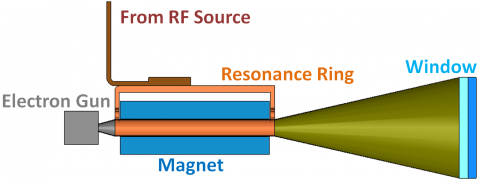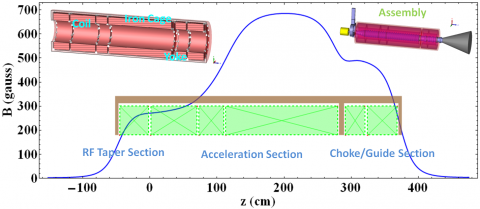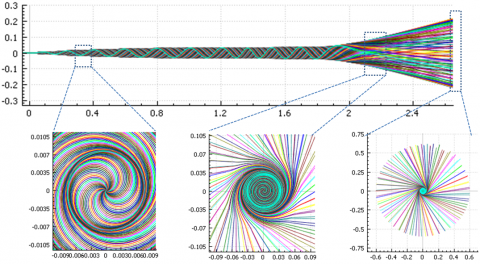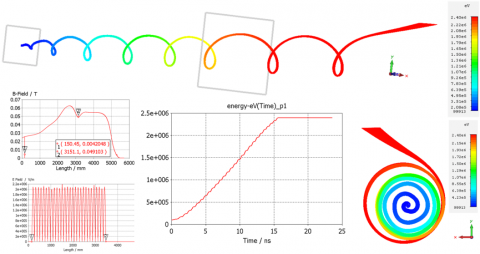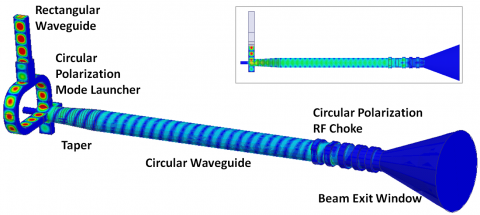A design and engineering study is described here for a MW-level electron beam source for environmental remediation based on extensions of the scientifically-proven Cyclotron Autoresonance Accelerator, dubbed CARA. CARA is distinguished by its exceptionally-high RF-to-beam efficiency, by its production of a self-scanning beam, and by its proportionately lower specific power loading on a beam output window.

Considerable published theoretical analysis and experimental confirmation of the CARA mechanism was carried out in the past under direction of Prof. Jay Hirshfield. Two significant goals for this study go beyond prior work, namely to design a system capable of efficient production of MW-level CW beams, and to realize a new concept for a beam window having several segments for reduced power loading that is possible because of a stroboscopic beam chopping property inherent in CARA. Applications are for sterilization (requiring a 0.5 – 1.5 MeV beam) and flue gas and waste water treatment (requiring a 1 – 2 MeV beam). Power from an efficient RF source is coupled into a resonant ring to obtain two high-amplitude TE11-mode traveling waves phased in quadrature to comprise a rotating wave in a cylindrical waveguide. The gun injects a DC beam (for continuous output), or a grid-modulated beam (for segmented output). The waveguide is permeated by a static magnetic field generated by a solenoid. The output beam spreads adiabatically in the decreasing magnetic field and self-scans on a circle as it moves to and beyond the output window or windows. Parameters are given in the Table below for MW-level CARA’s in the 0.5 – 2 MeV energy range. All system efficiencies are >50%.
